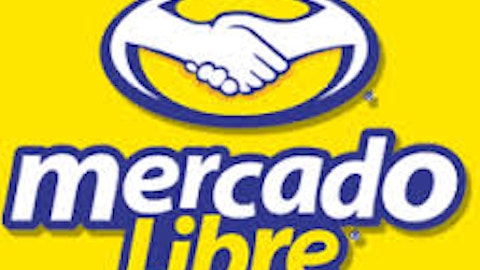Williams-Sonoma, Inc. (NYSE:WSM) has been around for 57 years, starting with one store in Sonoma, California. While the brand is far from a new, fast-growth concept, they continue to add to the Williams-Sonoma stable of brands for growth.
The company acquired Pottery Barn in 1986 and expanded the concept into Pottery Barn Kids stores in 2000. West Elm was launched in 2003. WSM has seven concepts with bricks-and-mortar stores. PBteen and Rejuvenation have only half a dozen stores between them. All the concepts send catalogs and are online. The top five revenue producers are Pottery Barn, Williams-Sonoma, Pottery Barn Kids, West Elm, and PBteen (direct to consumer only).
The store base is shrinking from a high of 627 in 2009 to 584 in Q3 2012—7% fewer retail stores. Seeing the trend, you might assume Williams-Sonoma is looking to become less focused on a retail bricks-and-mortar presence with the emphasis on direct to consumer (DTC). The company circulates fewer catalogs (down 2% in 2011), but with e-commerce taking off, DTC is now 47% of revenue (up from 39% in Q4 2010), pushing DTC to ever bigger percentages of combined revenue. While it appears that WSM is transitioning to an Amazon.com, Inc. (NASDAQ:AMZN) e-commerce model, that’s probably not the case with management’s intention to keep retail stores as part of the WSM growth story.
From the conference call:
At the beginning of the year, we outlined for you our three key strategic initiatives for driving sustainable profitable growth and increasing shareholder value. They are growing our existing brand, global expansion, and launching new businesses.
I was expecting an initiative to continue closing stores and making retail outlets essentially showrooms for online sales, as in the case of Best Buy Co., Inc. (NYSE:BBY)/Amazon. Amazon.com, Inc. (NASDAQ:AMZN) is considered a category killer, destroying most companies in direct competition with it. Best Buy is a great example of one such destroyed company. Best Buy’s revenue has declined precipitously in the last few quarters after disappointingly flat revenue growth for several years. The price per share has cratered along with the declining earnings to $15 per share after 2010 highs of over $40. Meanwhile, Amazon continues to trade near its all time high around $280. That being said, Amazon has not been able to kill WSM as effectively as it did Best Buy. Amazon does directly compete, carrying some of the same brands, and that may be why the Williams-Sonoma brand stores, heavy into cookware, are comping lower than West Elm and Pottery Barn stores, which have fewer products in common with Amazon. The diversity of Williams-Sonoma across its various concepts is keeping it alive.
That’s not to say Williams-Sonoma is without serious competition. Bed Bath & Beyond Inc. (NASDAQ:BBBY) competes across almost all of WSM’s segments, including cookware, kitchen accessories, furniture, kids’s furniture, bedding and home decor. BBBY has a far larger store base at 1,173 and manages to turn in better margins even without the emphasis on e-commerce that WSM is transitioning to. They do more than twice the revenue of WSM and have faster growth with consistently high same store sales. WSM has beat BBBY’s comps the last two quarters. Bed Bath & Beyond currently sells at a P/E of around 13 compared to Williams-Sonoma’s 19. BBBY is still largely bricks-and -mortar, but sees high returns on its invested capital at greater than 30%.
WSM’s strong presence in bricks-and –mortar is not cash consuming either, with 2011 returns on invested income at 17%. The capital is split between PP&E and working capital (mainly inventory) nearly evenly. Most of the property is in the stores, with only 17 distribution/customer/corporate HQ care centers. They own only $138 million in land and buildings, and lease the rest.
Retail stores are a declining percentage of total revenue, at 53% in Q3 2012. In 2010 it was nearly 61% of total revenue and has been steadily dropping as direct-to-consumer (DTC) revenue climbs. The changing percentages are good for margins. Retail operating margins were around 9% in Q3 2012, ranging between 7% to 9% in the past 8 quarters. That compares to a much higher 23% operating margin for DTC in the third quarter. As DTC becomes a larger percentage of total revenue, combined operating margins have improved and that may continue as e-commerce continues to expand.
Pottery Barn and West Elm have turned in the best sales numbers over the last year, but growth in the Williams-Sonoma brand has stalled. Williams-Sonoma has the biggest store base at 259 and has seen a high number of closures — down from 268 in 2011. West Elm has room to grow with 45 stores—up from 36. Pottery Barn is the second highest store count with 193 –- there were 201 in 2011. What WSM as a company can do is run with the best performing stores and begin to close the Williams-Sonoma brand if it continues to lag. Having multiple brands appealing to diverse demographics gives them a great deal of flexibility to respond to consumer needs.
Operating and net argins continue to improve. Management says the fixed costs being leveraged over higher revenue are the main driver behind the improvement. Additionally, margins cannot help but expand as direct becomes a higher percentage of total revenue. Shopping online is becoming second nature to most consumers, and the trend favors WSM growth and margin expansion.
WSM was hit hard during the recession in 2008, but made a resounding recovery in 2009 as operating income and net income increased from higher margins as costs were cut. Even with declining revenue in 2009, operating income and net income made big gains. Closing 17 stores decreased expenses, and even though DTC had not fully recovered, cost-cutting was an effective means for providing growth. The improving 2010 numbers were the result of several parts of the business hitting their stride– margins were expanding, revenue was growing in the low teens, and direct revenue began to climb. 2010 was one of the company’s best years in nearly a decade.
Same store sales growth slowed for two quarters in 2012 from 2011 numbers with sales per square foot gaining. The business is seasonal and the sales/SF increased over the holidays in Q4 with a slowdown in Q1.
Same store sales and sales per square foot
Quarterly
2009 was a tough year for retail with a great recovery in 2010. Unbelievably, WSM hit $5 per share in 2009 and has rebounded to $45 on the strength of its recovery, and is near split adjusted historic highs. There was a recent run in August 2012 as the company reported better than forecast second quarter revenue and earnings. Revenue increased 7.3% with earnings of 43¢ per share. Revising guidance upward was also a plus and a reason for shares to climb. In Q3, they raised the upper end of guidance again by a penny with a range of $2.45-$2.52. Overall that’s an increase of 5¢ since initial guidance, and represents the highest earnings in the company’s history. Year-to-date (nine months) earnings are $1.22.
What will it take to make the high end of $2.52?
Looking back at last year, Q4 earnings in 2011 were $1.17. Q4 2012 EPS will have to be $1.30 to meet the high-end $2.52 guidance. That’s an 11% increase over last year to make $2.52 in 2012. On Jan. 16 2013, WSM announced a 4.8% increase in sales and reiterated Q4 and 2012 earnings. Since guidance was confirmed after the holidays, it seems safe to assume they made the numbers they reported for Christmas — Q4 EPS will range between $1.21 to $1.28 for Q4 2012, up from the $1.17 in Q4 2011. If that holds, they will miss the high end of guidance by 2¢, and that will prevent a run up in the share price.
Total revenue is expected to be in the range $1,360 to $1,400 million, up 2% – 4% year-over-year. Same store sales will be between 2% to 4%, lower than the 6.6% growth in Q4 2011.
The market reaction and 10% drop in share price may either be a disappointment that guidance was not raised again or skepticism that Q4 would see a surprise 11% increase in EPS meeting $2.52. With the market it’s impossible to say for sure.
With the price at nearly historic highs and guidance confirmed, without an upward earnings surprise for fiscal year 2012 there is unlikely to be a lot of upside to the price per share in the near term. The big gains were seen in August and the market presently looks unlikely to give WSM a lot more since it did not gain when guidance was reiterated. Over the long term, WSM will grow revenue near comps for retail if the store base numbers are static or decline. Comps are likely to range between 3% to 6%–not an exciting growth story. The real growth may be in direct to consumer -— especially e-commerce, now 47.3% of revenue with growth of 17%.
What would make WSM the perfect stock to buy?
1). Close stores in concepts that are not growing—-Williams-Sonoma
2). Increase the winners—-West Elm and Pottery Barn
3). Push e-commerce even harder
4). Lower price per share—as always
The article Williams-Sonoma — Well Done But Over-Cooked originally appeared on Fool.com and is written by j.a. graham.
Copyright © 1995 – 2013 The Motley Fool, LLC. All rights reserved. The Motley Fool has a disclosure policy.






